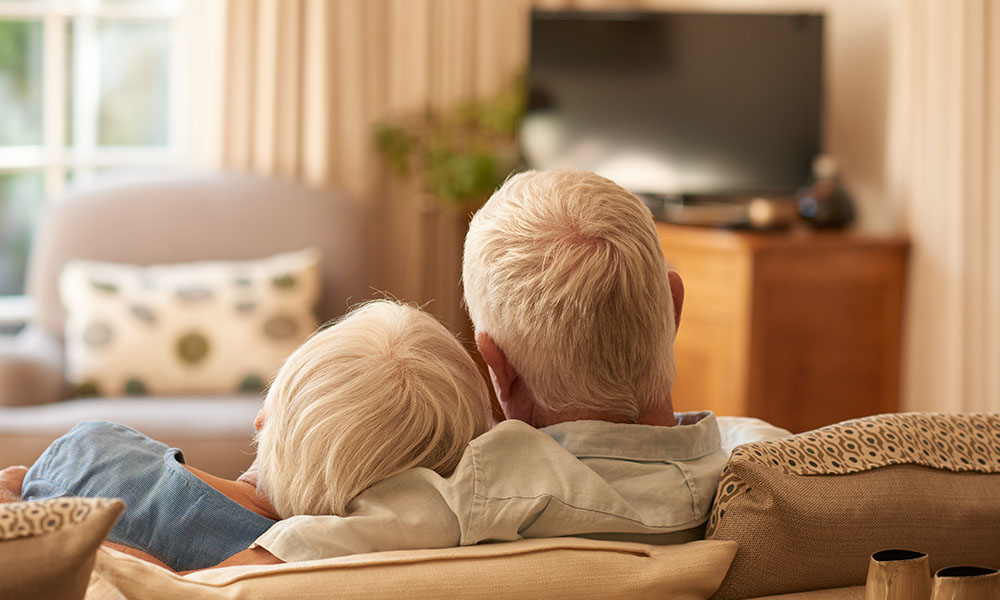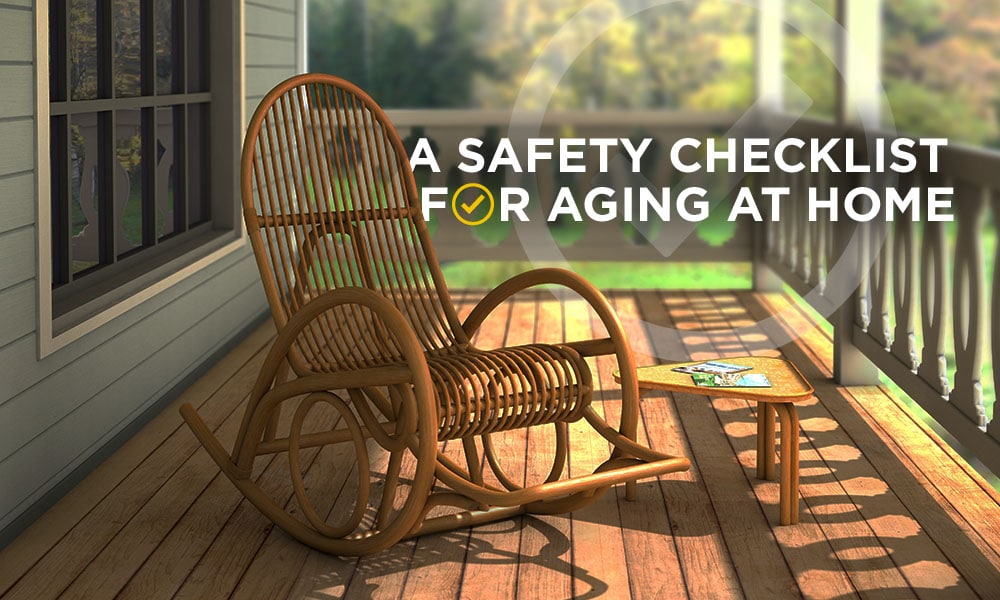As we age, it’s a good time to ask ourselves how we may better equip our homes to fit our changing needs. What are some ways to modify our homes so that we can safely age in place? American Standard is here to provide helpful information about this, including some of the challenges you might face, safety concerns to consider, and helpful tips on how to stay safe in your home.
What is Aging in Place?
According to the Family Caregiver Alliance, the vast majority of elderly people receiving assistance (80%) live in private homes in the community, not institutions. It turns out that most seniors want to age in place – their own place to be exact.
Aging in place means that a person in their Golden Years has made a conscious decision to stay in the residence of their choice with the comforts that are most important to them. To make this possible, aging in place might include adding supplementary services to enhance and help their living conditions.
Challenges of Aging in Place
Before you begin to make changes to your home, you need to first understand what challenges you might expect to go through when aging in place. No matter how much you take care of your mind, body, and soul, aging changes us. Not all mental and physical challenges are negative (older adults often have a more positive outlook on life, are more patient, and can understand others), but it’s important to acknowledge some fundamental shifts you’ll likely see.
Here is a list of some of the changes and challenges you might face as you begin to age:
- Loss of eyesight
- Muscle mass reduction
- Physical and mental endurance drop
- Higher risk of falling or another physical injury
- Hearing loss
- Less mobility
- Less flexibility
As you age in place, the above challenges factor into building a comfortable life at home. Recognizing this can help you and your caregiver adapt and set you up for success when aging in place.

The Importance of Aging in Place
There are many reasons why an individual might want to age in their own home, including comfort and security. But some of the reasons to age in place impact more than just the adult themselves.
According to the U.S. Census Bureau, by the year 2030 there will be 71.5 (20% of the projected U.S. population) million Americans over the age of 65, a number that is more than twice what it was in the year 2000. With a limited number of retirement homes and care facilities, this large population will likely be living at home more than ever before. As we look at our projected future, it’s best for seniors and their families to begin to think about the changes they can make so it’s easier to age in place due to changes in the economy, retirement home availability, and overall comfort.
An Aging in Place Checklist
Now that we understand the challenges and the importance of aging in place, it’s time to fully understand what it takes to age in place the right way. Save this checklist for future reference, and enjoy your favorite space as you continue to age in place and in comfort.
First, you need to consider what it means to you personally to age in place. Consider things like:
- Where you want to spend your retirement.
- How you want to set up your living space to fit your health needs and personal preferences.
- What additional outside help you will need to live comfortably at home.
- If you want to make all the major decisions when it comes to aging in place.
Having control of the way you age and where you age is the beauty behind aging into your Golden Years right in your own home. Here is a safety checklist to consider when setting up your home for maximum comfort and safety:

The Exterior of Your Home
Any and all repairs: This includes making sure that all entrances,roofing, steps, and other exterior spaces are in good condition. Consider the:
- Decks and steps
- Doors
- Roof
- Ramps
- Windows
Low maintenance landscaping: Landscaping is a time-intensive activity and can cause injury if not planned for properly. You may enjoy taking care of these spaces, or you may want someone else to do it for you. When adapting your home to aging in place, consider your:
- Flowerbeds
- Grass
- Shrubs
- Stones
- Level ground
The Interior of Your Home
Lighting & Electrical: For increased safety and comfort, install back up lighting for power outages, nighttime guide lighting, porch lighting, and easy-to-access controls. Don’t forget:
- Proper wiring
- Proper outlets
- Proper capacity
- Backup generator
- Cords in good condition
Kitchen: The kitchen is a necessary area for comfortable living, so make sure counter tops are the correct height, the sink and water includes safety controls, storage areas are at an accessible level, stove controls are easily available, and all areas of the kitchen include wheelchair access if necessary. Examine the:
- Counter tops
- Sink and faucet
- Stove and oven
- Storage
- Proper plumbing
Doors & Windows: When considering door features, make sure that they’re wide enough for easy access with a walker, wheelchair, scooter, etc. Windows should have the proper sealing and closures that make them easy to access from a seated position. Don’t forget to check the:
- Doorway features
- Doorway size
- Window features
- Curtains & shades
- Locks
Bathroom: The bathroom is an important place to modify for aging in place. Whether you’re installing a walk-in tub or walk-in shower, American Standard has all your bathroom safety needs available at just a click of a button. When building your bathroom, consider:
- Walk-In Tubs
- Walk-In Showers
- ADA Toilets
- Smart Toilets and Bidets
- Safety Bars
Flooring: Making sure the majority of your flooring in your home is clear for plenty of room to move around. In addition to this, installing slip-resistant surfaces instead of throw rugs is a very important safety consideration. Throw rugs are one of the two major home hazards for causing falls. When creating a comfortable home for older adults, don’t forget to have:
- Safe Stairs
- Slip-resistant flooring
- Clear space
- Even surfaces
- Easy to clean space
The Security of Your Home
Alarm System: Install proper surveillance and alarm systems for all possible instances, such as burglary, fire, carbon monoxide poisoning, and other hazards.
Escape Route: Make sure you are able to exit the house safely in case of an emergency. Pinpoint where your major exits are and how to get to them.
Now that you have a better understanding of aging in place, it’s time to get started on some of these tips and guidelines to assure a safe a relaxing retirement. Enjoy where you are living to the fullest as you age into your Golden Years.


